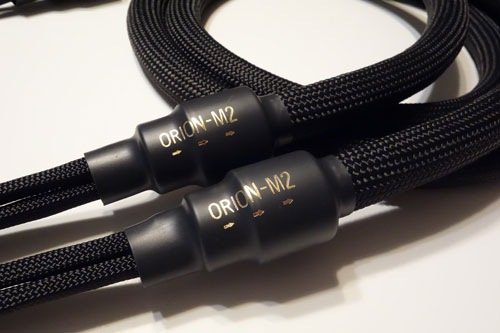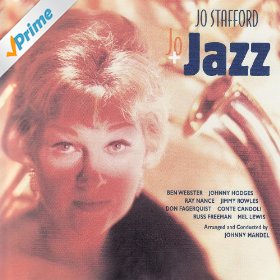Silnote Audio Cables

An Embarrassment of Riches
The serendipitous discovery of a stand-out product or product line, particularly a line that has managed to fly under the audiophile radar, represents one of the unalloyed joys of reviewing. I made one such discovery during the 2014 AXPONA show when I happened upon the Silnote Audio room. The system that Silnote’s approachable proprietor and chief designer, Mark Williams (along with his fiancé and charming assistant Michele) put together, seduced and enticed my tired ears. Their room came within shouting distance of earning my personal “best sound at the show” designation. Silnote again delivered the goods, big time, at the 2015 AXPONA show, once again earning top accolades from yours truly (and my pal Doug Schroeder over at Dagogo).
Here were cables that, to my ears, offered superbly natural, realistic sound at reasonable if not cheap prices. Propulsively dynamic, unwaveringly neutral, and silky-smooth, the Silnotes hit all the right notes in my book. Intriguingly, at AXPONA 2015, the Silnote team used a somewhat unorthodox combination of vintage, near-vintage and relatively new gear to startling effect. That system captured Danish jazz songstress Sinne Eeg’s moving interpretation of Legrand and Bergman’s “What Are You Doing the Rest of Your Life” from her 2014 Face the Music CD [Stunt Records – STUCD 14042] with all of its lilting pathos and longing intact.
Following my shameless monopolization of the sweet-spot, I then shamelessly requested review samples. To my surprise, Mark responded with neither the practiced dismissal that some elite manufacturers mouth, nor the unbridled enthusiasm that little-known start-ups sometimes exhibit. Rather, Mark responded with complete bewilderment that I, or anyone else for that matter, would actually want to review his products. It had apparently never crossed his mind to seek out aggressively reviews from some of the high end rags. After explaining that products as good as his deserved wider recognition, a deal was struck, one confirmed in a series of follow-up emails.
Handmade Beauties
Silnote’s extensive line-up of hand-made cables exudes quality. Beautifully crafted, flexible, and easy to install into any system, they eschew garish packaging in favor of solid engineering and superb sound. For this review, I received a demi-loom of wires: the brand new Orion M2 speaker cables, one run each of its Poseidon Signature RCA and XLR terminated interconnects, and one each of the Poseidon GL and ES power cables.
 The Poseidon Signature interconnect cables are designed with multiple 24k Gold, Silver, Copper POF7N, zero crystal, and surgical-grade precious metals. The XLR version is a true triple balanced design. In my system, one run of Poseidon Signature RCAs linked my Marantz CD/SACD player to my reference Parasound JC-2 line stage. A balanced pair of Poseidon’s linked the Parasound to my reference power amp, the Cambridge 840W.
The Poseidon Signature interconnect cables are designed with multiple 24k Gold, Silver, Copper POF7N, zero crystal, and surgical-grade precious metals. The XLR version is a true triple balanced design. In my system, one run of Poseidon Signature RCAs linked my Marantz CD/SACD player to my reference Parasound JC-2 line stage. A balanced pair of Poseidon’s linked the Parasound to my reference power amp, the Cambridge 840W.
The Poseidon GL power cable features ultra-pure copper conductors and cryogenically treated Wattgate connectors in a 12 gauge design. The Poseidon ES power cable, Silnote’s top-tier power cable, utilizes ultra-pure copper conductors and cryogenically treated Wattgate “Audio Grade” connectors in a 10 gauge design. The Poseidon ES fed my Parasound JC-2 line stage, while the lower-priced but still superb Poseidon GL power cable fed the Marantz player.
My Cambridge 840W can only be used with 20V-20 amp grounded male and 120V-20 amp IEC 320-C19 female plugs. Silnote offers this cable configuration, but only as a special order option. According to Mark, “We do offer most any power cable including the Euro Schuko and any 20 amp configuration. These power cables (Schuko, 20amp, [and] all other unique configurations) have always been on a “build to order” basis however they will be featured on our new website.” Pending the website update, and not wanting to delay matters, I ended up using Soundstring’s GEN II SE 20V-20 power cable with the 840W for this review.

Finally, Silnote’s new Orion M2 speaker cables, models which borrow heavily from the firm’s top-tier Orion M1s, utilize Ultra Pure Solid Core Copper (UPOF7N) with 32 total individual solid core conductors and employ a nine gauge arrangement. Mark designed the M2s with an eye toward offering most of the performance of the his top-tier M1s, but at a much lower cost. For this review, he supplied an eight foot Orion M2 run to feed the King Sound Prince III full-range electrostatic loudspeakers, superb two-ways that have totally mesmerized and captivated this jaded listener over the past couple of months (review forthcoming).
Sonic Impressions
 The Silnotes were sonic chameleons in the best sense of the word. Peerlessly neutral, smooth and beautifully detailed, but never etched or bright, they reproduced the unique tonal shadings, dynamic gradations and overall gestalt of any recordings I threw their way with unflinching fidelity. Pianist Abdullah Ibrahim’s latest effort, The Song is My Story [Intuition, SSC 1404], unfolds as a 56 minute long exercise into brooding introspection. Eschewing any expression of technical exuberance, Ibrahim instead languishes over each and every note, phrase and chord with a near obsessive attention to detail. The Silnotes allow each minimalist flourish, from the initial transient to the piano’s lingering decays, to unfold unimpeded.
The Silnotes were sonic chameleons in the best sense of the word. Peerlessly neutral, smooth and beautifully detailed, but never etched or bright, they reproduced the unique tonal shadings, dynamic gradations and overall gestalt of any recordings I threw their way with unflinching fidelity. Pianist Abdullah Ibrahim’s latest effort, The Song is My Story [Intuition, SSC 1404], unfolds as a 56 minute long exercise into brooding introspection. Eschewing any expression of technical exuberance, Ibrahim instead languishes over each and every note, phrase and chord with a near obsessive attention to detail. The Silnotes allow each minimalist flourish, from the initial transient to the piano’s lingering decays, to unfold unimpeded.
The importance of accurately capturing the impact of that initial transient, both dynamically and temporally, cannot be overstated. It is through those difficult-to-reproduce transient cues that listeners are able to distinguish a trumpet from a tenor saxophone, or a harpsichord from a piano. If you have ever had occasion to examine a digital fourier transform (DFT) sound spectrum display of a musical event in real time, what you come away with is a deeper appreciation of how the initial transient (and sometimes end transient) flows naturally into the sustain and thence into the sonic decay. While the spectrum analyzer has the ability to identify the onset and conclusion of each event as separate and distinct in time, what one hears – or should hear – is an uninterrupted continuity of the sonic event, from transient attack to final decay.
One reason why early digital recordings sometimes sound (and sounded) so bad, so homogenous and two-dimensional (despite digital’s measured dynamic range superiority over analogue), owes in large part to the medium’s inability in its early days to put the “ones” and the “zeros” back together in a continuous, temporally cohesive fashion. What we have since discovered is that preserving the temporal relationships between attack cues, sustains and decays is absolutely essential if reproduced music has any chance of sounding natural.
In practice, all components impact the temporal relationships between transient cues, sustains and decays in one way or another. Some reproduce these relationships intact, others don’t. With lesser components, including cables, these temporal distortions (or perhaps “inter-temporal” is more accurate) result in a reproduced sound that both knowledgeable and novice listeners describe as homogenous, overly-smooth, and lacking in detail and air. One suffers no such sonic short-comings with the Silnotes. They allow one’s system to reproduce transient details, sustains, and decays in a startlingly realistic way. As icing on the cake, a billowy cushion of ambient air envelopes each instrument, adding to the heightened sense of realism.
 The Silnotes lavish equal care and attention on the female voice. Jo Stafford’s Jo + Jazz [Corinthian COR 108CD], a breezy affair that pairs the Golden Age jazz diva with a host of luminaries, including Ben Webster, Johnny Hodges, and a young Johnny Mandel, has been in heavy rotation here at casa Jeffries for nigh these past two months. Described by New York Times critic Stephen Holden as the “wistful singing voice of the American home front during World War II and the Korean War”, Stafford recorded Jo + Jazz in 1960. Originally recorded on the Columbia label, the album failed to attract much acclaim upon its initial release. Columbia didn’t help matters with its almost non-existent promotion of the album, a real tragedy.
The Silnotes lavish equal care and attention on the female voice. Jo Stafford’s Jo + Jazz [Corinthian COR 108CD], a breezy affair that pairs the Golden Age jazz diva with a host of luminaries, including Ben Webster, Johnny Hodges, and a young Johnny Mandel, has been in heavy rotation here at casa Jeffries for nigh these past two months. Described by New York Times critic Stephen Holden as the “wistful singing voice of the American home front during World War II and the Korean War”, Stafford recorded Jo + Jazz in 1960. Originally recorded on the Columbia label, the album failed to attract much acclaim upon its initial release. Columbia didn’t help matters with its almost non-existent promotion of the album, a real tragedy.
Reputedly engineered by the same production team behind Miles Davis’ Kind of Blue (and reissued by the Stafford-owned Corinthian label in 1993), Jo + Jazz boasts the same rich sonics, the uncanny immediacy, and superb focus of its more famous stablemate. Nowhere is the atmospheric DNA of Kind of Blue more apparent than when Jo stamps Mercer, Hampton and Burke’s Midnight Sun with her own wispy and restrained genetic markers. Always relaxed, and always seemingly on the verge of falling just a tad behind the beat – man could she swing – Stafford’s superb phrasing, sultry hesitance, and classically-inspired precision serve the pop and jazz idioms equally well. The Silnotes deftly capture the full range of micro-dynamic cues embedded in this nearly 55 year old recording.
 Tonally, the Silnote’s never put a wrong foot forward. Through them, one can easily discern the sonic differences between various components. With my reference phono stage (Pro-ject’s superb little Phono-Box RS) boosting the output of Dynavector’s low output DV-20X2 mc cartridge, Daniel Barenboim’s sensitive reading of Schoenberg’s Verklärte Nacht (Transfigured Night)(Schoenberg: Verklarte Nacht /Wagner: A Siegfried Idyll /Hindemith: Trauermusik [Angel S-36484]) sounds spot on. Airy and seductive, if not the last word in neutrality, the Barenboim disk exhibits an almost “whole milk” creaminess. It is a work of immense beauty, one that I return to often.
Tonally, the Silnote’s never put a wrong foot forward. Through them, one can easily discern the sonic differences between various components. With my reference phono stage (Pro-ject’s superb little Phono-Box RS) boosting the output of Dynavector’s low output DV-20X2 mc cartridge, Daniel Barenboim’s sensitive reading of Schoenberg’s Verklärte Nacht (Transfigured Night)(Schoenberg: Verklarte Nacht /Wagner: A Siegfried Idyll /Hindemith: Trauermusik [Angel S-36484]) sounds spot on. Airy and seductive, if not the last word in neutrality, the Barenboim disk exhibits an almost “whole milk” creaminess. It is a work of immense beauty, one that I return to often.
With the right recording, the scrupulously neutral JC-2/Phono-Box RS combo sculpts beautifully three-dimensional images, and does so with a bracing clarity and purity. But, both components can at times drift into leanness. The combo works wonders with something like the Schoenberg, with its overly-ripe mid-bass balance, precisely because the subtly lean character of the front-end electronics usefully offsets the recording’s inherent richness.
By way of contrast, through the recently added Parasound JC-3+ phono preamp (review also forthcoming), the same recording, while retaining most of its inherent beauty, no longer sounds whole milk creamy, but instead chocolaty rich; almost too rich, in fact. With its lush, more fully developed tonal palette, the JC-3+ exacerbates the Schoenberg’s inherent warmth a bit too much, resulting in a cloying, almost “syrupy” darkness. The Silnotes make all of these tonal differences abundantly clear.
 On the other hand, with a more naturally balanced recording, say Charles Ives: Calcium Light Night [Columbia MS 7318], the results are spectacular. Brass instruments are reproduced with startling power and intensity, as on the opening cut, The See’r, at least until tape saturation distorts the dynamic crest. Or take jazz clarinetist Jimmy Giuffre’s path-breaking Jimmy Giuffre 3 [ECM 849 644-1], featuring Paul Bley on piano and Steve Swallow on bass. The Silnotes capture the liquid atmospherics, eerie holography and George Russell-inspired dissonances of these March and April 1961 dates (originally recorded by Creed Taylor for Verve but remixed by ECM in 1990) without bloat or added thickness. Dynamics too, from soft to loud, are handled with aplomb. Dynamically, the Silnotes come across as highly nuanced performers, able to capture subtle micro-dynamic gradations and bone-crunching climaxes with equal fidelity.
On the other hand, with a more naturally balanced recording, say Charles Ives: Calcium Light Night [Columbia MS 7318], the results are spectacular. Brass instruments are reproduced with startling power and intensity, as on the opening cut, The See’r, at least until tape saturation distorts the dynamic crest. Or take jazz clarinetist Jimmy Giuffre’s path-breaking Jimmy Giuffre 3 [ECM 849 644-1], featuring Paul Bley on piano and Steve Swallow on bass. The Silnotes capture the liquid atmospherics, eerie holography and George Russell-inspired dissonances of these March and April 1961 dates (originally recorded by Creed Taylor for Verve but remixed by ECM in 1990) without bloat or added thickness. Dynamics too, from soft to loud, are handled with aplomb. Dynamically, the Silnotes come across as highly nuanced performers, able to capture subtle micro-dynamic gradations and bone-crunching climaxes with equal fidelity.
Final Thoughts
Of the Silnotes I had on hand, the superb Orion M2 speaker cables delivered the biggest improvement in my system. Don’t get me wrong: the Poseidon Signature RCA and XLR terminated interconnects, as well as the Poseidon GL and ES power cables, each offered and offer superb sound, even when pitted against cables that far exceed their reasonable asking prices. Indeed, I was sorely tempted to purchase the whole demi-loom from Mark, but available funds only permit one such indulgence at the moment (the M2s). To frame things differently, I don’t think that the M2s offer across-the-board better sound than the Poseidon line of cables, especially the Poseidon Signature XLRs. The M2s simply offered the biggest sound quality improvement in my system, and with my choice of components. Your experience may differ.
By deftly balancing detail retrieval with unwavering musicality, the Silnotes offer more than a taste of the very best the high end has to offer. They represent the latest thinking of an engineer who truly cares about the way music sounds (and should sound when reproduced in the home); and who is, paradoxically, perhaps a bit too self-effacing for his own good (that’s a compliment, by the way). Stereophile founder J. Gordon Holt once described the brilliant John Curl in similarly glowing terms. Truth be told, the high end is full of smack-talking pitchmen, hucksters, and pseudo-engineers declaring their slickly marketed products to be the Second Coming, and everything else dog food. By way of contrast, Mark Williams and Silnote are the genuine articles. Offering sound quality beyond reproach and serious value (all coupled with a healthy dose of humility), the man and his products are a real breath of fresh air.
It goes without saying that Mr. Williams and his wonderful products earn my highest recommendation. He, and his lovely cables, will almost certainly feature prominently on my short-list of Stereotime’s Components of the Year. Well done! 

Maurice Jeffries
Silnote Audio cable pricing
Poseidon Signature interconnect cables: $1,995 per metered pair (RCA or XLR terminated)
Poseidon ES Reference power cable: $995 for a 5 foot run
Poseidon GL Reference power cable: $495 for a 5 foot run
Orion M2 speaker cables: $3,200 for an 8 foot pr. (single-wired, spade terminated)
Manufacturer contact information
Silnote Audio
Boone’s Mill, Virginia
(540) 206-4835![]()
Website: www.silnoteaudio.com/
Email: silnoteaudio@yahoo.com
One thought on "Silnote Audio Cables"
Leave a Reply
Stereo Times Masthead
Publisher/Founder
Clement Perry
Editor
Dave Thomas
Senior Editors
Frank Alles, Mike Girardi, Russell Lichter, Terry London, Moreno Mitchell, Paul Szabady, Bill Wells, Mike Wright, and Stephen Yan,
Current Contributors
David Abramson, Tim Barrall, Dave Allison, Ron Cook, Lewis Dardick, John Hoffman, Dan Secula, Don Shaulis, Greg Simmons, Eric Teh, Greg Voth, Richard Willie, Ed Van Winkle, Rob Dockery, Richard Doran, and Daveed Turek
Site Management Clement Perry
Ad Designer: Martin Perry





Hi Maurice. Great review! So much so I have ordered an M1 elite XLR from Mark! Wondering the Orion speaker cable. I have the wonderful siltech emperor crown. Wondering if have had or know of people who can speak on the comparison? Thanks so much